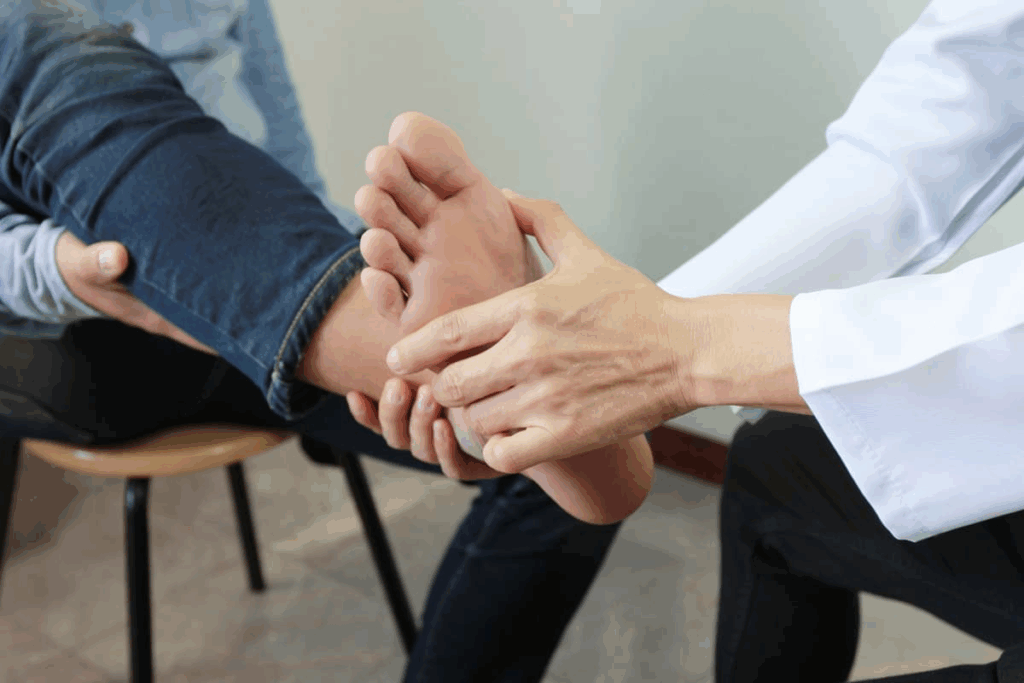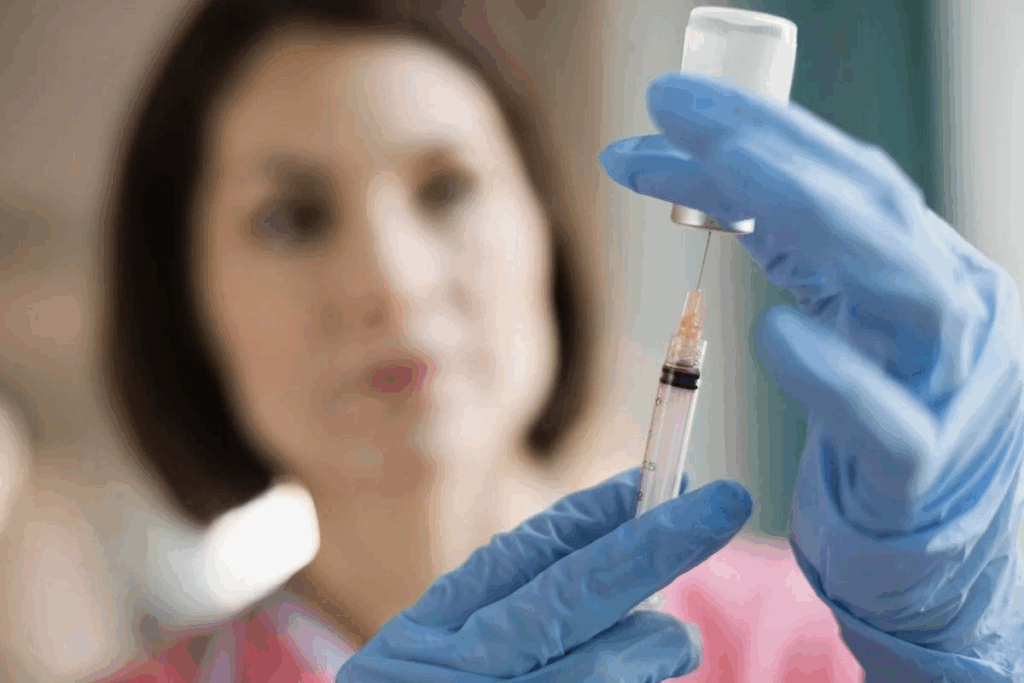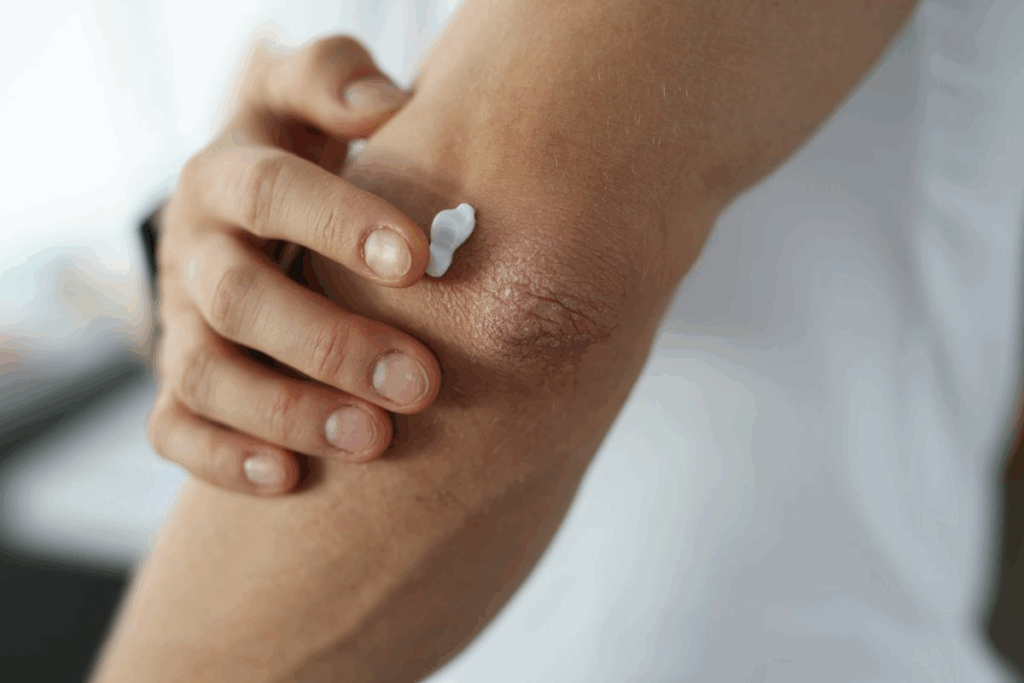
Knowing how to recover after a cortisone injection is key to managing pain. At Liv Hospital, we help you through every step of your recovery journey. We make sure you get the care and support you need.
Patients often ask when they can go back to normal activities after a cortisone shot. Doctors say the recovery time can last from a few days to a week. It’s best to rest the area and avoid hard activities for 24 to 48 hours.
Healthcare experts, like those at Southside Pain Specialists, advise taking it easy for a day after the shot. They also say to avoid heavy lifting or driving for at least 24 hours to support proper healing after a cortisone shot in back recovery time.

Back pain can really hurt, but cortisone injections might help. They are used to treat many back problems. This can bring relief to those with chronic pain.
Cortisone shots, or steroid injections, mix a corticosteroid with a local anesthetic. They are put directly into the painful area. Michigan Neurology Associates & Pain Consultants say they work faster than pills.
The corticosteroid cuts down inflammation. The local anesthetic numbs the area. This gives quick pain relief.
Cortisone injections help with several back issues, including:
These problems often lead to long-term pain and swelling. Cortisone shots can manage these issues well.
The procedure happens in a doctor’s office or clinic. The patient lies down, and the area is cleaned. Using tools like fluoroscopy or ultrasound, the doctor puts the mixture in the right spot.
The whole thing usually takes less than 30 minutes. Knowing about cortisone injections helps patients choose the best treatment. It makes understanding the recovery process easier.

Getting a cortisone shot in your back means knowing how to heal properly. We’ll show you what to expect in your recovery. This will help you plan your activities and know what to look forward to.
The first 24 hours are key after a cortisone shot. Rest is recommended until you feel all your limbs again. New York Spine Specialist says to skip intense exercise or heavy lifting during this time. Following these tips helps avoid problems.
After 24-72 hours, you can start doing normal things again. But, avoid strenuous activities to not make things worse. People feel relief, but some might not feel better yet.
Recovery can take up to 7 days to see the full effect. Be patient and don’t rush. Your body needs time to heal, and too much activity can harm your progress.
Knowing how to recover and following the advice will help you heal well. This way, you can enjoy the benefits of the cortisone shot.
Understanding what to expect after a cortisone injection is key. Patients often wonder about the recovery and managing any discomfort. Knowing this can help you feel better.
Discomfort after a cortisone shot is common. It can be mild soreness or more pain, depending on the person and where it was injected. Applying ice to the affected area can help. Use ice packs for 15-20 minutes, several times a day, for the first 24 to 48 hours.
Some people might feel a cortisone flare, a temporary pain increase. This usually goes away within 24 to 48 hours. Southside Pain Specialists says this is a common side effect, so be ready for it.
Pain relief from a cortisone injection doesn’t happen right away for everyone. Some feel better in a few days, while others take longer. The effects of cortisone usually start to show in 2 to 7 days after the shot.
The length of pain relief after a cortisone injection varies. It depends on the condition, your health, and the corticosteroid used. On average, relief can last from a few weeks to several months. Sometimes, the pain relief can last a long time, but it often comes back.
Knowing about cortisone injection recovery helps manage expectations. Being aware of what to expect and how to handle pain can improve your recovery. This knowledge can help you make the most of your treatment plan.
The first 48 hours after a cortisone injection are key to a good recovery. It’s important to rest and do some gentle activities to help heal.
Rest for the first 24 hours after your shot. Avoid hard work, bending, twisting, or heavy lifting. Michigan Neurology Associates & Pain Consultants say this rest is vital for the cortisone to work and reduce swelling.
Key activities to avoid in the first 24 hours include:
Ice or heat can help with pain and swelling after a shot. For the first 48 hours, do this:
Your sleep position can greatly affect your recovery. To ease discomfort and support your back or the injected area:
By following these tips, you can ensure a smooth recovery and get the most from your cortisone shot. If you have any unusual symptoms or concerns, reach out to your healthcare provider.
After getting a cortisone shot, it’s important to find a balance between rest and activity. Your body is healing, and you should avoid too much effort. Slowly getting back to your usual activities is key.
Increasing your activity level slowly is vital for recovery. Start with small tasks and gradually do more. This helps your body adjust and reduces the chance of setbacks.
Begin with simple tasks like short walks or light stretching. As you get better, you can do more and harder activities.
When doing chores or going back to work, choose tasks that are easy first. Then, move to harder tasks. This way, you avoid too much strain.
If you have a desk job, you might be able to go back to work soon. Just make sure to take breaks. But jobs that involve a lot of physical work might take longer to recover from.
| Activity Level | Recommended Timeline | Examples |
| Low | Days 3-5 | Light stretching, short walks, desk work |
| Moderate | Days 5-7 | Household chores, driving, light exercise |
| High | After Day 7 | Strenuous exercise, heavy lifting, manual labor |
Pay attention to how your body feels during recovery. If you notice more pain, swelling, or discomfort, slow down. It’s a sign you’re pushing too hard.
Other warning signs include not feeling rested, trouble sleeping, or feeling generally unwell. If you see these signs, cut back on activities and talk to your doctor.
Listening to your body and gradually increasing activity helps you recover well after a cortisone shot.
After getting a cortisone injection, many wonder when they can start exercising again. The answer varies based on where the injection was, how bad the condition is, and personal factors. It’s important to find a balance between rest and slowly starting to move again to avoid overdoing it.
Short walks are okay within a day or two after the shot. Southside Pain Specialists say gentle moves help keep joints moving and reduce stiffness. But, stay away from hard activities that could make things worse or slow healing.
Recommended light exercises include:
When the pain starts to go away, you can start doing more. This usually happens 3 to 5 days after the shot. Always listen to your body and stop if you feel pain, as it might mean you’re doing too much.
Moderate exercises may include:
How long it takes to get back to full exercise depends on many things. Most people can get back to normal in 5 to 7 days or more, with their doctor’s okay.
“It’s essential to follow the specific guidance provided by your healthcare provider, as they can offer personalized advice based on your unique situation.”
Some exercises are bad during recovery because they stress the treated area too much. High-impact activities, heavy lifting, and bending are big no-nos.
Exercises to avoid include:
By following these tips and talking to your doctor, you can safely get back to exercising after a cortisone injection.
Different injection sites need their own recovery plans for the best healing. The recovery time can change a lot, depending on where the cortisone was injected. At New York Spine Specialist, we give each patient personalized advice for their recovery.
Recovering from a cortisone shot in the back needs careful steps to avoid problems. Patients should not lift heavy or bend for at least 48 hours after the shot. They should do gentle stretches and short walks to stay mobile without hurting their back.
It’s important to watch for any signs of more pain or discomfort. Using ice or heat, as your doctor tells you, can help with pain and swelling.
For hip injections, be careful with activities that put weight on your hips or twist them. Avoid high-impact activities like running or jumping for 3-5 days. Doing gentle exercises like straight leg raises can help keep your hip moving without hurting it.
Listen to how your body reacts to the injection and adjust your activities. Slowly adding more activity can help avoid overdoing it.
Knee injections need a recovery plan that helps reduce swelling and keeps the knee moving. Patients are often told to elevate their legs and use ice to lessen swelling. Doing gentle knee bends and straightening exercises can help keep the knee moving.
It’s key to follow the specific post-injection instructions from your healthcare provider. They might have extra advice based on your situation and the procedure.
By following these specific recovery tips, patients can heal better and get the most from their cortisone injections.
Whether you can drive after a cortisone shot depends on a few things. This includes where the shot was given and how you react to it. Cortisone shots help with pain and swelling in places like the back, shoulder, hip, and knee.
After getting a cortisone shot, many people wonder if they can drive again. Driving safely is a big concern because of the shot’s effects and the medicines used.
It’s usually best not to drive yourself home after a cortisone shot. The shot might make you feel sleepy or numb. This can make it hard to react quickly or make good decisions while driving.
Doctors, like those at Michigan Neurology Associates & Pain Consultants, say not to drive for at least 12 hours after an epidural injection. This rule helps keep you safe and lowers the chance of accidents.
How long you need to wait to drive again depends on how you feel and where the shot was given. Most people can drive when they feel okay and can react normally again.
As a rule, wait until you’re no longer feeling sleepy or uncomfortable. This usually takes about 24 hours, but it can be different for everyone.
The place where you got the shot can affect how you feel and when you can drive. For example:
| Injection Site | Considerations for Driving |
| Back (Epidural Injection) | Avoid driving for at least 12-24 hours due to possible numbness or weakness in the lower legs. |
| Shoulder | May have limited movement or pain; can drive when you feel comfortable enough to drive safely. |
| Hip or Knee | May need to wait until you can move and have strength in the affected leg before driving. |
It’s very important to listen to your doctor’s advice. Your situation can be different, and other health issues or medicines you’re taking can affect when you can drive.
In summary, while there are general rules for driving after a cortisone shot, it’s best to decide based on how you feel and your doctor’s specific advice.
Knowing about possible issues after a cortisone shot can help you recover better. Cortisone shots are great for pain and swelling, but knowing the side effects and when to see a doctor is key.
Some side effects after a cortisone shot are normal and go away by themselves. These include:
But, it’s important to know the difference between normal and abnormal side effects. Severe pain, signs of infection, or numbness/weakness in the legs are not normal and need immediate doctor’s attention.
If you have any of these symptoms after a cortisone shot, call your doctor right away:
At Southside Pain Specialists, we tell patients to watch for these signs and seek help if they happen.
While cortisone shots help a lot, there are things to think about long-term, like if you get them often. These include:
Talking to your healthcare provider about how often you get cortisone shots is important. This helps make sure they stay safe and effective for you.
By knowing about possible problems and when to get medical help, you can get the most out of cortisone shots. This way, you can enjoy their benefits while avoiding risks.
Recovering well after a cortisone shot is key to lasting back pain relief. By following the doctor’s advice and slowly getting back to activities, you can get the most out of your shot.
We’ve talked about the need for rest, using ice and heat, and slowly getting active again. Knowing how long it takes to recover and watching out for any issues helps you feel more in control.
It’s important to be careful with your activities after the shot. Following the right guidelines for exercise helps you recover smoothly. This can lead to lasting pain relief, letting you do your usual things again without pain.
By sticking to these tips and listening to how your body feels, you can improve your recovery. This way, you can enjoy lasting relief from back pain. Good recovery strategies are essential for the best results after a cortisone shot.
Wait at least 24 to 48 hours before exercising. The exact time depends on where you got the shot and how you recover. You can start with light exercises in 1-3 days. Move to moderate exercises in 3-5 days. Full exercise routines can take 5-7 days or more.
It’s best not to drive on the day of the shot, if it was in your shoulder or arm. Wait until you’re no longer feeling numb or in pain. This ensures your safety on the road.
Avoid heavy lifting, bending, or hard activities for the first 48 hours. If the shot was in your hip or knee, don’t put too much weight on it. Also, avoid exercises that target the injected area.
Recovery time for a back shot is usually 1 to 7 days. You might feel some discomfort at first. But, it will get better as the corticosteroid works.
Yes, walking is okay after a knee shot. But, avoid hard walking or putting too much weight on it for 24 to 48 hours.
Wait 24 to 48 hours before starting light exercises after a hip shot. You can do gentle stretching and exercises that move your joints in 1-3 days. But, avoid hard activities for 3-5 days or more.
Use ice for the first 48 hours to reduce swelling. After that, switch to heat to help with healing. Always use a cloth or towel between your skin and the ice/heat. Limit use to 15-20 minutes at a time.
Yes, sleep in a way that doesn’t put pressure on the injected area. For back shots, try sleeping on your back with a pillow under your knees. For hip or knee shots, sleep on the opposite side with a pillow between your knees.
You might feel more pain, have skin flushing, or trouble sleeping. But, serious problems like infection, nerve damage, or tendon rupture are rare. If you have severe pain, fever, or unusual symptoms, call your doctor right away.
Pain relief can last from a few weeks to months. It depends on the person, the condition, and where the shot was given. Some people get relief for a long time, while others might not.
Won, H. S., Yang, M., & Kim, Y. D. (2020). Facet joint injections for management of low back pain: A clinically-focused review. Anesthesia & Pain Medicine, 15(1), 8-18. https://pmc.ncbi.nlm.nih.gov/articles/PMC7713865
Subscribe to our e-newsletter to stay informed about the latest innovations in the world of health and exclusive offers!
WhatsApp us